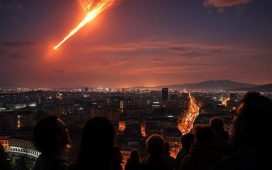The Cocos (Keeling) Islands look like heaven on Earth.
But things on this tiny little coral atoll are not how they seem.
The Defence Force is about to splash more than $500 million on this most northern part of Australia to upgrade an airstrip to take more high-tech spy military planes.
And only 100 metres from that runway, ancient turtles can be seen starving and dying in a milky-looking lagoon.
It’s got locals worried. They’re already concerned about the changes they can see happening on the islands.
Parts of Home Island and West Island are falling into the sea.
And the last two coconut palms fell on historic Prison Island two years ago; all that’s left of it now is a sandbar.
Locals are not only worried about what the runway upgrade will mean for the turtles … but their futures too.
Australia has two small territories in the Indian Ocean: Christmas Island and Cocos Islands.
Cocos Keeling is the furthest west, closer to Jakarta than Perth which is 3,000 kilometres away.
Looking on a map, it’s a tiny dot surrounded by ocean.
Its location between Australia and Sri Lanka makes Cocos a good location for Defence to send spy planes up for a bird’s-eye view of the busy international shipping lanes of the Sunda and Lombok straits.
Loading…
While many Australians are aware of Christmas Island, thanks to the media attention surrounding its immigration detention centre and the natural wonder of the annual migration of the red robber crabs, fewer know Cocos Islands exists.
But this coral atoll has always played a significant strategic role for Australia.
Aside from its natural beauty, one of the stand-out features is a massive airstrip more than two kilometres long on West Island that far surpasses the passenger needs of the 544 people who live there.
People live on two of the 27 islands that make up the atoll, Home Island and West Island.
The original airfield was built near the end of World War II in 1945 and was used in the war against Japan.
It’s a time remembered vividly by some of the older Cocos Malay living in the traditional housing known as the kampong on Home Island.
Although young at the time, they still talk about the major bombing raid by the Japanese in 1944 that destroyed 27 homes and killed a mother and child.
When asked how they feel about Defence spending $567.6 million to bolster its runway to take heavier military planes, one woman whispers in hushed tones in the local language, Cocos Malay:
“Takut, takut sekali (Afraid, very afraid).”
Seriwati Iku says many of the older generation think an increased defence presence on Cocos could put the island in the crosshairs.
“Even now, when we hear planes coming in landing all these white planes, they’re saying: ‘Oh, what’s that? What’s happening now?’
“The thing is, our grandparents, they still remember the war.”
Spiritual leader Haji Adam says the seniors have raised concerns with Defence that the airstrip could make the islands a military target.
“We’re concerned because we have our old people, who feel sad after the Second World War happened, the Japanese happens,” he says.
“So when they have the project of upgrading the airstrip on West Island, they start to worry that in the future the islands will become a military base.”
Defence play
Earlier this year, the Albanese government made public its defence strategy review signalling Australia’s military had begun transforming itself for a new age of missile warfare.
The review lays out how the world is changing, with China’s military build-up the largest of any nation since WWII. It concludes Australia is not equipped to deal with it alone.
Australia was already part of the Quad agreement with India, Japan and the United States. The Quad recognised the possible threat posed by China’s rise in the Indo-Pacific region and the ever-increasing reach of its Belt and Road Initiative.
Then in March, Australia formalised a $368 billion AUKUS submarine deal with the United States and United Kingdom.
So what do these multi-billion-dollar deals have to do with these tiny islands?
It’s all about geographic positioning, according to Troy Lee Brown, a defence expert based at the University of Western Australia.
“Cocos will be brilliant because of just how strategically positioned it is near the straits,” he says.
“You’ve got the Malacca, Sunda and Lombok straits. Monitoring those straits you can see particularly Chinese submarines but all sorts of ships and craft and submarines.
“If you’re ever going to find them, that’s where you’d pick them up through the shallower, narrower transit areas.”
Right now, the runway on West Island is engineered to take Boeing 737 passenger flights and smaller military planes.
Defence’s plan to reinforce the runway will lengthen it by 150 metres, allowing it to take P-8A Poseidon aircraft capable of low-level anti-submarine warfare operations and high-tech military surveillance.
These plans were approved by parliament earlier this year and the Defence website says preliminary work should start by late 2023.
Locals tell the ABC there is always “secret squirrel” stuff happening on the islands.
They notice people coming and going; recently a diving team turned up to lay a subsea telecommunications cable in the bay in front of where West Islanders live.
Turtle graveyard
The legacy of previous iterations of the airstrip can be seen in a milky-looking lagoon about 100 metres from the end of the runway.
There are piles of rusting perforated steel planking that sit oddly against the backdrop of the paradise island.
Tour operator Kylie James says builders working on the airstrip in the 1950s pushed the WWII taxiway into the lagoon.
Languishing now in that shallow water among all the metal are hundreds of turtles, starving and dying.
Loading…
Cocos Keeling is home to hawksbill turtles and green turtles, with population sizes estimated in the high hundreds and several thousand respectively. Both species are listed as vulnerable.
Kylie has been visiting Cocos since the early 1980s. She fell in love with the place and moved to the atoll in the 2000s, eventually setting up a turtle tourism business with her husband, Ash.
Most days she can be found out on the water, showing people the beauty of the azure waters and its sea life from motorised canoes.
Over time she’s noticed the health of the environment changing, most notably the loss of the seagrass that sustains much of the marine life, including the turtles.
Speaking from her front verandah on West Island, she explains the most obvious sign the seagrass is dying is that turtles are dying and starving.
Kylie wanted the ABC to see the problem firsthand, driving quickly through the coconut plantation to the lagoon before the tides changed.
At the bottom of the runway, the scene could only be described as a turtle graveyard.
Loading…
In the soft light of dusk, these ancient species were struggling to move and were incapable of catching the tide out. Their shells were skeletal, withered and wasting.
“Here on high tides, there’s a lot of water in here and you’d get a lot of turtles coming through here,” Kylie says.
“They usually would go out on the high tide, but now obviously they’re getting in here and they’re getting kind of stuck in here because they don’t have the energy to get away.
“They are staying here and dying.”
Principal research scientist and turtle specialist Scott Whiting has been studying the population of turtles on Cocos Keeling Islands since the late 1990s.
He says the health of the Cocos turtles are important for the region, as genetic testing has found they have come from rookeries as far afield as Ningaloo in Western Australia, Indonesia and Malaysia.
“So if you’re a turtle at Cocos, you have got in-built navigation to know where you need to migrate to nest, but I don’t think there’s an in-built navigation that when you’re hungry, [it says] where’s the next food source?
“And so really, the 1,000km to Indonesia is probably the best bet, and that’s a big gamble to get out and just head off in a direction to hopefully find food.
“So I think the turtles are going to probably have to stick it out and we’re probably going to see a lot of skinny turtles and a lot of dead turtles.”
Dr Whiting believes things changed for the worse around the time dredging began to build the West Island jetty.
“That’s when I first started to notice the differences,” he says.
Defence has plans to build a second construction wharf not far from the jetty to handle the materials required to build the new runway.
Dr Whiting is concerned this could mean more dredging.
Loading…
In March 2022, Christmas and Cocos Keeling islands were declared one of the largest marine sanctuary areas in the world.
But Dr Whiting says despite the importance of the turtle population to the region, he thinks it’s a case of out of sight, out of mind.
“If the same thing happened in Perth, if we had sick, skinny turtles, it would go into to the Dolphin Discovery Centre at Bunbury and someone would spend $1,000 injecting it with antibiotics and feeding it on squid until it was well enough.
“Then they’d release that one turtle after a year.
“But we’ve got probably 1,000 turtles like that out at Cocos, so on that scale what do you do? I don’t think we’ve got answers for that.”
Environmental approvals
The plan to upgrade the airstrip will be the biggest infrastructure project ever on West Island in dollar terms.
The Defence plan involves extending the runway by 150 metres at the southern end and widening taxiways.
Fulton Hogan is the preferred contractor.
The period of public consultation has closed, but Defence’s website says it expects to begin works by the end of 2023, start construction in 2024 and have it completed by 2026.
A search by the ABC of the Environment Protection and Biodiversity Conservation (EPBC) Act public portal does not find any referrals, notices or offsets registered yet for the Defence work at Cocos Islands.
This worries Scott Whiting.
“I’ve got no doubt they’ll go ahead. It becomes a national security issue rather than an environment issue and I know how that plays out,” he says.
“I don’t know how much force we can put on them.”
The Department of Climate Change, Energy, the Environment and Water and Parks Australia share responsibility for the environmental regulation of Cocos Islands.
In a statement, the department said “it had not yet received a referral under national environmental law, the EPBC Act 1999, from the Department of Defence for the proposed Cocos (Keeling) Islands airfield upgrade project”.
The ABC contacted the office of Defence Minister Richard Marles which also provided a statement.
“In line with usual practice, Defence will consider all potential environmental impacts as part of the airfield’s design and construction,” the statement said.
“All works will be completed under an environmental management plan which aims to mitigate environmental impacts.”
‘Inconvenient Australians’
As is often the case for an external territory, there is a complicated web of state, local and federal bureaucracy for services and environmental approvals. Services like water are provided by the WA government and are subject to state regulations.
For example on West Island, Water Corporation has put in an application for a desalination plant that will help cater for the doubling of the population as a result of building the airfield.
This handballing between governmental departments is a theme often spoken about by locals.
Half-joking, locals occasionally refer to themselves as the “inconvenient Australians”.
The external territory is expensive to run, but it’s also too strategically important for the government not to.
“Yes, sometimes I think that,” says Michael Kirkpatrick, chair of the Cocos Islands Tourism Association.
“I think when you look around the atoll, there is a chronic underinvestment in infrastructure here.
“We’ve all expressed our views of about that to the various layers of government that run this place over the years, and we still have chronic underinvestment in infrastructure.”
The islands’ complex and dark colonial history is well-documented.
It was not until April 6, 1984 that the Cocos community, in a United Nations-supervised act of self-determination, voted to become part of Australia, and the government committed to raising services to a level comparable to mainland Australia.
One significant bugbear in services delivery for all islanders is the cost of getting rid of waste compared to other remote communities.
For example, a car will cost $10,000 more in freight to get to Cocos, but will also cost at least $1,000 to dispose of.
Local government is now pushing that cost back onto islanders.
Nek Yusri is one of the more outspoken members of the seniors group. He hopes the upgraded airstrip may alleviate some of the costs associated with living in a place that is thousands of kilometres from the mainland.
“The opportunities are there for the upgrade of the airstrip to provide services, perishable items, cargo uplifts,” he says.
“If they can help us, great, but if they can’t, then we’re basically back to square one and basically where we are at the moment.”
Sinking islands
Inundation studies of Cocos Keeling Islands predict the atoll could be under water in 50 or 60 years.
For now, sandbags provided by the Commonwealth hold back the water on both Home Island and West Island.
During cyclone season, roads in the kampong on Home Island are often inundated and houses can be thigh-deep in saltwater.
Students at the Cocos high school have been visited by hydrology scientists who have explained that climate change is causing rising waters.
Year 10 student Izaiah says he has noticed changes to the environment when he is out fishing with his grandad, such as the loss of seagrass.
He finds the information sessions can be alarming.
“It’s pretty, pretty disappointing. Or not disappointing … devastating to see that.
“The island sinking definitely scares me, because I love this place and wouldn’t want it to go under water.”
JP Hobbs, a senior scientist with Sea Country Solutions, has been coming to Cocos since 2001 and he’s seen the impacts of climate change in that time.
“Climate change has a wide range of impacts and one of those is the rising sea level,” he says.
“So since the time that I’ve been coming here, you can see the changes to the coastlines and this causes islands to erode away.”
Home Island is particularly affected by the inundation and there is talk of moving the Cocos Malay population to the mainland.
The seniors group told the ABC they have contemplated going to the United Nations with their concerns about the island sinking, much like those in the Torres Strait.
“It hasn’t got to that yet, but we could consider it [going to the UN],” Nek Yusri says.
The group says they don’t want to leave an island where they have lived for generations.
“I’ll put a figure on it — $4 million,” one man jokes.
Loading…
Loading…
Imam Haji Adam says the conversation around moving has become more pointed as living so remotely gets more expensive, like the price of rent, fresh produce and waste removal.
“Well, most people have thought about this, in relation to the moving to other places on the mainland,” he says.
“We have other people living from Cocos in different places like Katanning, Perth, Sydney, Melbourne and so forth.
“If the government’s really happy to offer some sort of dollars to the community, and they’re really happy to move away from here to the mainland, if it’s something in the future.”
Future of the islands
It’s not only Home Islanders who are contemplating their future on this paradise island.
Graham Flynn has been an avid windsurfer for most of his life — it’s what brought him to Cocos in the first place in the mid-1980s.
He and his Cocos Malay building partner constructed a number of holiday homes for tourists.
He says he can no longer insure the properties, as insurance companies will no longer offer premiums on Cocos Keeling.
“I reckon [the Commonwealth] will come in here one day and just go, ‘Listen, where you are with global warming you’re gonna be underwater now’,” he says.
“‘So what we’re going to do, we’ve done a valuation on your property — here’s the money, get on the plane and get out’.
“Where will I go?”
There is a theory doing the rounds at Cocos that Defence will eventually forcibly remove islanders like what happened at the militarised atoll Diego Garcia, which is west of Cocos in the middle of the Indian Ocean.
In the late 1960s, locals were expelled from Diego Garcia by the UK government so a joint UK-US military base could be established there.
Islanders fear the Commonwealth could do the same at Cocos Keeling.
“The government aren’t going to spend $500 million on a runway if it’s going to be washed away,” Graham says.
“They can go out there in the lagoon and they can dredge till the cows come home and they will create an island here.
“Everyone’s going, ‘Right, well we need this place because just over the horizon is Diego Garcia’.
“They want to use this place as a stepping stone.”
Michael Kirkpatrick, however, doesn’t agree that the community could be forcibly removed.
“I have a view that the politics of that would be so fraught with difficulty for mainland politicians to embark on a Diego Garcia forced-removal-type exercise that they would never go near it,” he says.
“That’s my view. I know that I differ from some people on that.”
Tour operator Pete McCartney hopes the defence spend will bring some positives to island living.
“We do have a cable that’s coming here and apparently delivers the fastest internet that you can have in the world, but we haven’t had any benefit from that yet because it’s gone out to the defence facility,” he says.
“But that could be added.
“There was hope that the Commonwealth might underwrite property for us or do something for insurance here.
“You know, it’s a big risk here, we really are putting ourselves out on a limb to live here.”
Shire chief executive Frank Mills spends some of his time flying between Cocos Islands, Perth and Canberra dealing with the various layers of bureaucracy on behalf of the community.
“Look, I guess to be perfectly honest, the Defence Force has a long-term picture in mind that perhaps is not being discussed at a community level,” he says.
“This is a very strategic location in terms of connectivity to Asia, and with a half-billion-dollar project going ahead, I think it would be fair to say that the Department of Defence has big plans for this place in the future.”
For Pete McCartney, he hopes his family will get to enjoy Cocos for generations to come.
“But, you know, my boys, I’d love to keep this house here for my kids when they grow up and they can have their kids here,” he says.
“If you’re an ocean-loving person, this is perfect.
“It really is a sense of being like a ship at sea here, you know where we are right in the middle of the Indian Ocean.
“There are all kinds of things that I guess are the negatives, but you know the positives are that you’re living in a beautiful, unique part of the world.”
Credits
- Reporting: Sinead Mangan and Alex Hyman
- Photography: Alex Hyman, Alice Angeloni, Chris Lewis and Sinead Mangan
- Video: Chris Lewis, Alex Hyman, Alice Angeloni and Nick Thake, Sea Country Solutions
- Illustration & animation: Sharon Gordon
- Additional reporting: Alice Angeloni
- Producer: Alex Hyman
- Editor: Daniel Franklin










